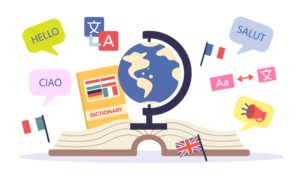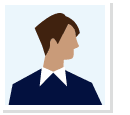German Translation Services in Japan: A Niche, Yet Powerful Market
While the demand for German translation in Japan may not match the volume of English or Chinese, it remains a vital service for specialized content. Common needs include Japanese–German and German–Japanese translations of product manuals and catalogs for Japanese and German-made goods, as well as articles and news in politics, economics, and culture. There's also a growing market for German translations and localization of Japanese literature, manga, games, and anime.
Germany, with its global giants in the automotive, transportation, electronics, and financial sectors, stands as Europe’s leading economic powerhouse. Additionally, German-speaking countries such as Austria and Liechtenstein are known for their wealth and high purchasing power, making them attractive markets for Japanese businesses.
NAIway Translation Service is proud to work with a network of highly experienced translators, each specialized in fields such as economics, education, IT, law, engineering, telecommunications, healthcare, and the arts. We provide high-quality translations tailored to your needs—ranging from business documents and legal contracts to technical manuals, medical reports, brochures, and websites.

For more details, please feel free to contact us.
German Translation Rates (Japanese-German & German-Japanese)
Below are NAIway’s standard translation rates.
Our regular translation fees cover all of the following services, so you can rely on us with confidence.
Translation
+
Native-Level Quality Check
+
After-Support※
※ As part of our after-support, we handle revisions and inquiries within the post-delivery verification period (typically one week).
(Please note that changes or additions to the original document are not included.)
Japanese to German Translation

From 29.15 JPY per character
German to Japanese Translation

From 30.8 JPY per word
- The actual cost will be estimated based on the content and volume of the document. Please send us the document when requesting a quote.
- Minimum Charge Policy. Depending on the character/word count and other conditions, we have a two-tier minimum charge system of 5,500 Japanese Yen or 11,000 Japanese Yen (tax included). This ensures coverage of the essential costs involved in translation coordination and quality assurance.
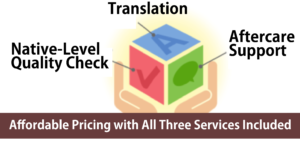
For more details, please feel free to contact us.
NAIway's Quality Assurance System
At NAIway Translation Service, we believe that quality management is our top priority as a professional translation company. To ensure the highest standards, we have developed our own Quality Assurance System (QAS) and implement strict quality control measures.
For high-quality Japanese-German and German-Japanese translations, every document undergoes a two-step review process: after the initial translation, a second translator conducts a thorough quality check.
We meticulously review each character and sentence, ensuring logical flow, terminology consistency, and appropriate expressions to deliver a refined translation tailored to your needs.
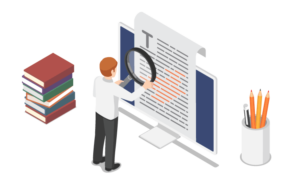
Multilingual Translation Support
At NAIway, we offer multilingual translation services. Along with German, we provide translations in English, Italian, Portuguese, Spanish, and more—all in one place.
If you're considering inbound tourism solutions, feel free to contact us for a consultation!
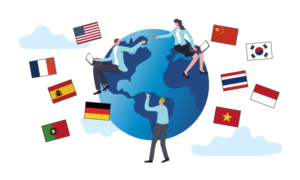
Introduction to Our German Translators
Here are some of the translators currently working with or registered at NAIway.
For more details, please feel free to contact us.
What is the German language?
The German Language: Reach, Variety, and Cultural Significance
German is not only the official language of the Federal Republic of Germany, but is also recognized as an official language in Austria, Liechtenstein, and Luxembourg. In Switzerland, over 60% of the population speaks German, and parts of eastern Belgium also have German-speaking communities.
While primarily spoken by a single ethnic group and its neighboring regions, German remains the second most widely spoken native language in the European Union, following English.
Like many languages, German features a range of dialects. These are broadly divided into Northern dialects (Low German) and Central/Southern dialects (High German). What is now considered Standard German is largely based on the East Central dialects, particularly those spoken in the Thuringia region. The translation of the Bible by Martin Luther, which used this dialect, played a pivotal role in establishing it as the foundation of modern Standard German.
German Script
The German language is written using the Latin script, consisting of 30 characters in total—the standard 26 letters of the alphabet, along with the umlauts (ä, ö, ü) and the unique Eszett (ß).
How to Say “Hello” in German
Guten Tag/ˈɡuːtən taːk/
Primary Regions of Use
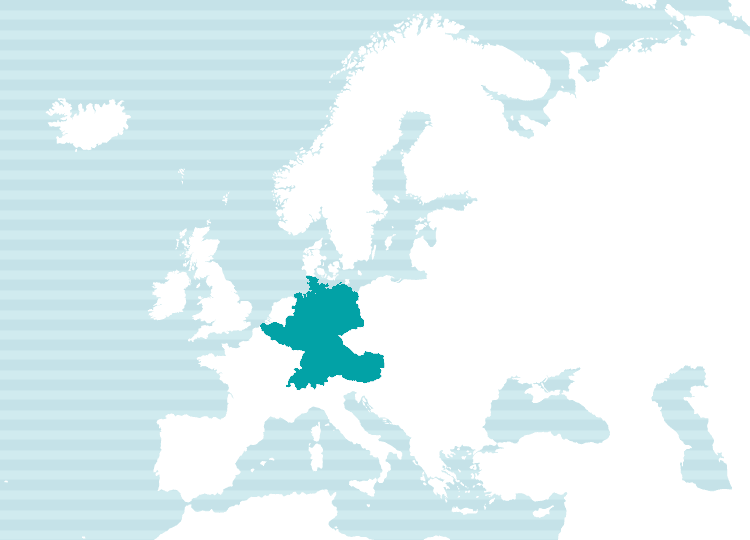
Language Family: Indo-European > Germanic > West Germanic
Regions Spoken: Germany, Austria, Liechtenstein, Switzerland, Luxembourg, Belgium, and more.
German Language Highlight
German Nouns and Their Gender: A Curious Trio
In German, all nouns have a grammatical gender—masculine, feminine, or neuter.
For example, Mann (“man” or “husband”) is masculine, and Frau (“woman” or “wife”) is, unsurprisingly, feminine.
But here’s the twist: gender in German doesn’t always follow logic. Mädchen (“girl”) is actually a neuter noun, not feminine.
There are more surprises:
The moon (der Mond) is masculine, the sun (die Sonne) is feminine, and a house (das Haus) is neuter. A desk is masculine (der Tisch), while a wall is feminine (die Wand).
Every noun in German comes with a specific definite article:
- der for masculine nouns
- die for feminine nouns
- das for neuter nouns
Because these articles are closely tied to each noun, German learners—including native-speaking children—often memorize them as pairs. And yes, even German kids get corrected by their parents when they get it wrong!
German Dialects
The Dialects of German: A Sound-Based Divide
German dialects are broadly classified into two main groups:
Northern dialects (Low German or Niederdeutsch) and Central and Southern dialects (High German or Hochdeutsch).
The primary distinction between these groups lies in a historical phonological shift known as the Second Sound Shift (Zweite Lautverschiebung).
This consonant shift, which began around the 6th century, profoundly shaped the pronunciation of Central and Southern dialects, while the Northern dialects remained largely unaffected. As a result, significant differences in consonant sounds emerged, forming the basis of the dialectal divide.
The High German dialects (Central and Southern) are further subdivided into Mitteldeutsch (Central German) and Oberdeutsch (Upper/Southern German).
While Standard German (Hochdeutsch)—based on a variety of Central dialects—is used in media, education, and official communication, regional dialects remain vibrant and commonly spoken in everyday life across the German-speaking world.
German in the Japanese Context
German Influence on the Japanese Language
In Japan, the introduction of Western medicine was heavily influenced by German educators, leading to the widespread adoption of German medical terminology. At one time, all patient records (karte) were written in German—the term itself derives from the German word Karte, which corresponds to the English card. Other medical terms of German origin include virus, gauze, capsule, vaccine, cast (Gips), neurosis, and hysteria.
Beyond medicine, German has also left its mark on Japanese vocabulary across various fields. In science, words like energy (Energie) and allergy (Allergie) stem from German. In classical music, conducting terms such as Takt (tempo) and note names like A, B, C are pronounced Ah, Beh, Tseh, following the German system.
Even outdoor and sports terminology shows this influence:
In mountaineering and hiking—pickel (ice axe), rucksack, seil (rope), schlafsack (sleeping bag);
In skiing—spur (trail), gelände (slope), and stock (pole).
German-origin words are woven into everyday Japanese in ways that many may not even realize, reflecting a unique linguistic and cultural connection.
